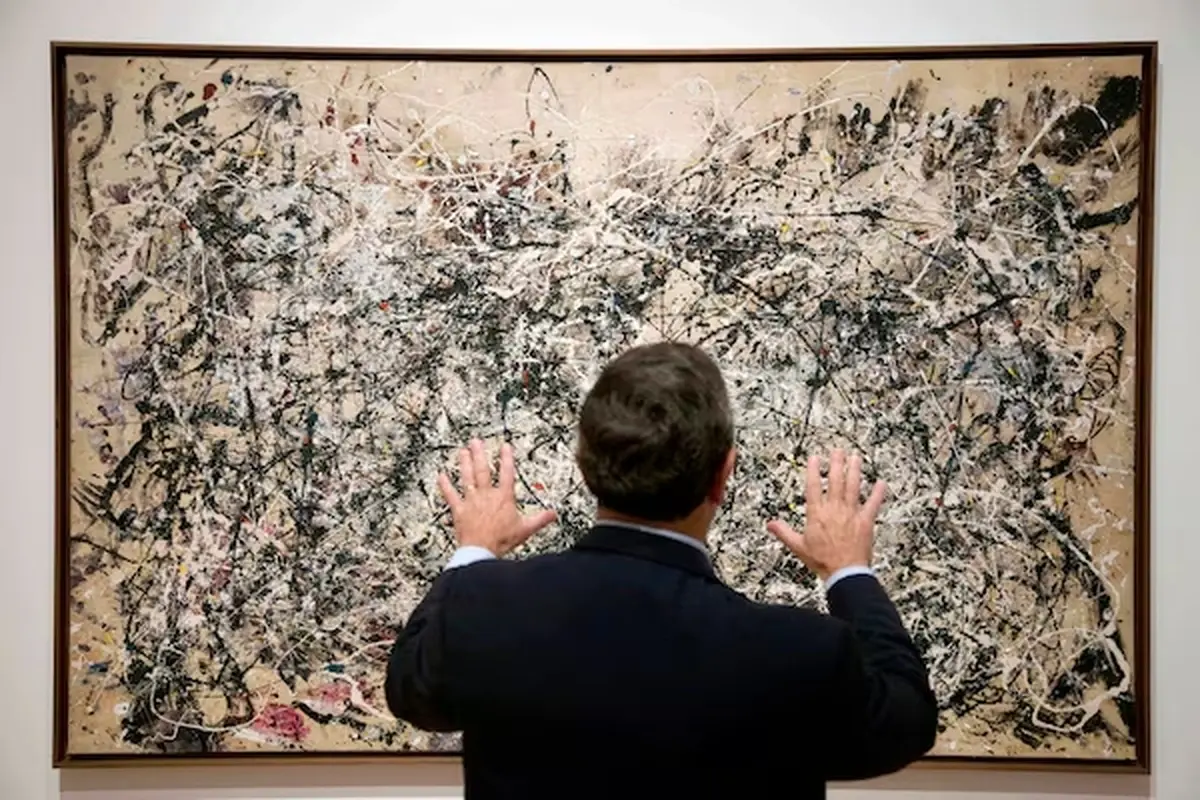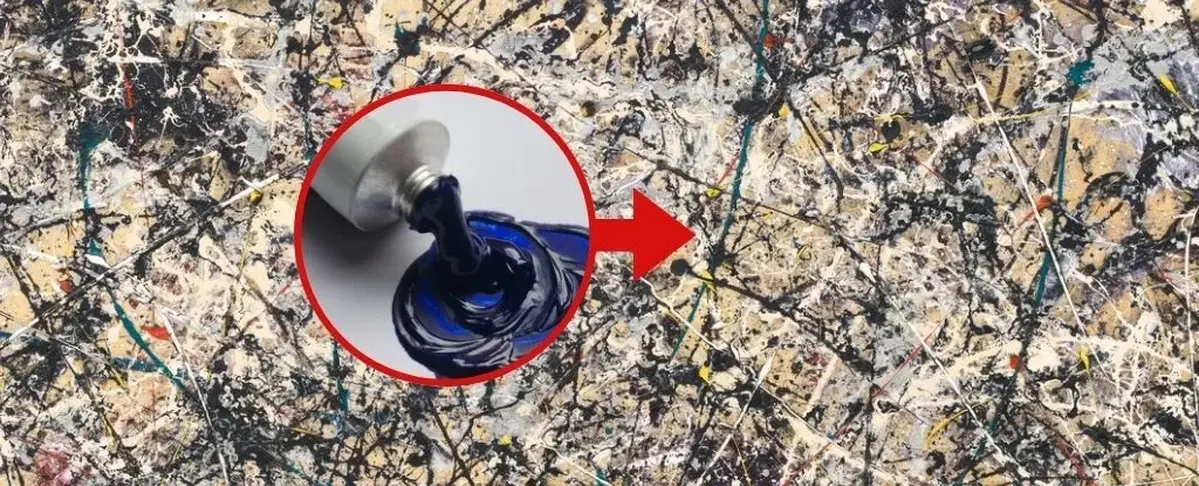 A team of scientists from the Museum of Modern Art in New York (MoMA), Stanford University, and the City University of New York has discovered that Jackson Pollock used a toxic pigment in his painting “Number 1A, 1948.”
A team of scientists from the Museum of Modern Art in New York (MoMA), Stanford University, and the City University of New York has discovered that Jackson Pollock used a toxic pigment in his painting “Number 1A, 1948.”
This work is one of the artist’s most famous pieces, displayed at MoMA, and is considered a symbol of his unrestrained creative freedom. The painting, measuring 2.7 meters wide, is a vivid example of abstract expressionism, showcasing dynamic swirls and splashes of color created with oil and enamel paints.
In previous years, researchers identified red and yellow pigments, but the azure blue remained elusive. Now, 77 years after the painting was created, it has been revealed that the artist used manganese blue.

To uncover this information, researchers took samples of the mysterious from the canvas and employed lasers to scatter light and measure molecular vibrations during their testing.
Manganese blue is a toxic synthetic pigment that was widely used in the 20th century, including in swimming pool construction. Moreover, it was even included in artist paint sets. However, production of manganese blue ceased in the 1990s due to its environmental impact and health risks. Experts warn that inhaling or ingesting this pigment can lead to nervous system disorders, as reported by Daily Mail.
When examining the artwork, it becomes clear that the paint was splattered and dripped across the canvas, creating a vibrant, multicolored scene. Instead of a signature, Pollock placed his handprints in the upper right corner.
Experts believe that the unique shade in Jackson Pollock’s painting is quite difficult to replicate by mixing paints. While creating “Number 1A, 1948” and other works, the artist likely poured manganese blue directly onto the canvas rather than mixing the colors beforehand on a palette.
Working on the floor of a spacious converted garage in Long Island, Pollock moved away from traditional oil paints and switched to enamels with lower viscosity, which were easier to pour.
Around the time this work was created, Pollock stopped giving his paintings expressive titles and began numbering them.
His wife, artist Lee Krasner, later remarked: “Numbers are neutral. They make people perceive the painting as it is – as pure painting.”
The research findings were published in the journal Proceedings of the National Academy of Sciences.
